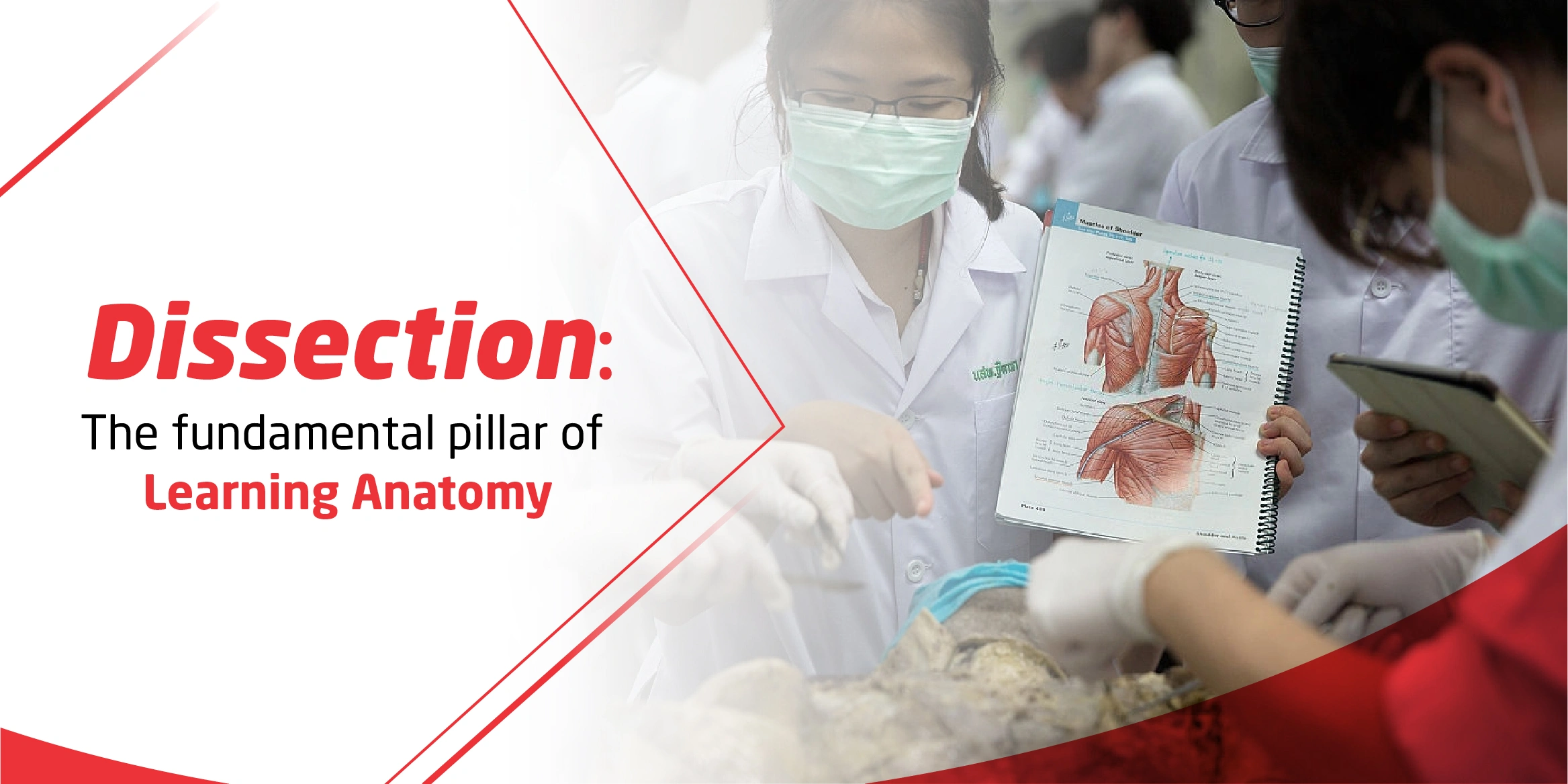
Dissection: A process of cutting apart or separating tissue as, for example, in the study of anatomy or in the course of a surgical procedure is referred to as the term dissection.
Just as the autopsy is done in pathology and forensic medicine to determine the cause of death, dissection is done in anatomy to give a student ‘hand on view’ of the body while also accustoming them to the transformation that the body undergoes after death
Dissection of the human cadaver has been the gold standard for teaching the networking and layout of the human body to the aspiring medical professionals. Surprisingly, the usage of cadaver has had a rather curious history. The use of a human cadaver dates back to 300 B.C. with the Greek physician who was also the father of anatomy, Herophilos. He is noted as being the first person to dissect a human cadaver.
Dissection is not only a skill but also an art that is identified as the signature of a surgeon. All medical practitioners exhibit their proficiency, besides the surgeon, like moval of a cyst, venesection, and so on. For this marvelous art, the initial learning seat is the anatomy dissecting room, "The learning that occurs in dissection is qualitatively different as compared to the learning that occurs in a lecture or paper-and-pencil setting. The fascination that students feel when they find real structures in their own specimens, no model, no video, no diagram, and no movie, the sense of discovery, wonder, and even the awe can duplicate that."
. Dissection is a memorable and instructive aspect, allowing students to learn how their own bodies work within the confines of the classroom.
Teaching human dissection is important for students to have adequate and exact knowledge of human anatomy for quality medical and surgical practices.
Experience with dissection makes the students gain a lot of things. Some of these include the necessary skills for dissection and respect for life that will be useful later in higher-level classes. The students gain a visual understanding of this hands-on job. They learn the true positioning of organs and have the opportunity to feel them while dissecting. The 3D view and texture friendly experience are things that the students cannot find in the textbooks or on the screens. Models and paper which do not serve as a sense of discovery or do justice.
The Dept of Anatomy of Santosh Medical College has a large well-illuminated & ventilated dissection hall that can accommodate about 150students at a time. There are 18 tables with marble/stainless steel tops with an adequate arrangement of stools. All essential equipment which is mandatory for the dissection hall, are present.
They are Drill machine, metal Hand saw, Band saw for sectioning body and limbs, Brain knife, Plastic tanks for storing soft and dissected parts, Trolley Table (Steel), Mortuary cooler /freezer with an arrangement to keep 2 body, two storage tank to hold 10 cadavers each, static/movable, durable tank with input and output facility with lid, embalming machine, etc.
● Our dept has a good number of cadavers which are usually obtained by voluntary donation; donated by the relatives of deceased according to wishes and will be made by the person before death. There is a separate embalming room for conducting embalming procedure
● Students are divided into the batch of 10, and each batch is assigned with one cadaver...The cadavers are properly drape before starting dissection.
● Dissection helps students to learn
1. about the internal structures of animals.
2.how the tissues and organs are interrelated.
3. It gives students an appreciation of the complexity of organisms in a hands-on learning environment.
4. It provides one of the most memorable and instructive units in a school biology course.
Postgraduate students of gynae, surgery, ortho &, dental specialties, etc are assigned with special classes of dissection/demo for gaining high-level information and knowledge. We usually maintain two-way teaching while doing dissection to make the session more interesting and help those students who find difficulty in understanding the concept. Dissection helps students in visual learning which nowadays helps in developing higher-order thinking skills, and the ability to recall facts and retain learning.
In the end, it is concluded that the cadaveric dissection hall of the dept of anatomy(SMC) is the hub of knowledge, research avenues & learning place for both UG and PG students.

